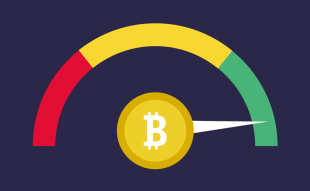Join Our Telegram channel to stay up to date on breaking news coverage
- What: A U.S. House Committee has rolled out a new bill seeking to ban various stablecoins for two years.
- Why: The drafted bill is aimed at restricting stablecoins that are backed by crypto assets rather than fiat currency.
- What next: If the bill is passed, the U.S. Treasury will conduct an extensive study on these assets and give its findings to the House of Committee within a year.
The U.S. House of Committee has rolled out a 73-page stablecoin draft bill that calls for a moratorium on stablecoins backed by other cryptos. The new bill seeks to enforce a two-year ban on certain stablecoins. Notably, the bill would pave some way for the United States agencies, including the Federal Banking regulators and the Department of Treasury, to have Reserve control over issuers and study CBDC.
On April 15, the bi-partisan bill was made public at the House of Committee’s hearing for the very first time. It has reportedly been circulating since the fall of 2022. However, the House of Committee is scheduled to meet on April 19 to discuss the role of stablecoins in payments and the need for legislation. Nonetheless, the bill is believed to be the first comprehensive proposed bill to pay for stablecoins to appear in Congress. Further, the bill facilitated the Federal Reserve’s control over non-bank stablecoin issuers, including USDC issuer Circle and USDT, which Tether issues.
Moreover, the draft targeted what it noted as “endogenously collateralized” stablecoins. As per the bill, the endogenous stablecoin “relies solely on the value of another digital asset maintained or created by the same originator to maintain the fixed price.” In other words, stablecoins are backed by other crypto assets rather than fiat currency.
The Bill and the U.S. Treasury
In the meantime, the U.S. Treasury would conduct an extensive study on these digital assets and later report its findings to the House of Committees within a year after passing the bill. The Treasury would look into the nature of the stablecoin reserves, the algorithms employed, and the aspects of decentralization in the issuing protocol’s governance structure.
However, this potential new piece of legislation notably calls for federal banking regulators to prescribe standards for interoperability among stablecoin payment systems. Additionally, it asserts that the Federal Reserve would approve and regulate non-bank stablecoin issuers.
On the other hand, the industry leaders, including the CEO of USD Coin Issuer Circle, Jeremy Allaire, have voiced their remarks via Twitter, noting:
“While comprehensive, there are open and challenging issues with the bill as proposed, and now is the time for our country and political leaders to dig in and get this right. The role of the dollar in the world is at stake.”
The bill’s draft has sparked confusion and debate within the crypto community. Some question whether the ban was limited to algorithmic stablecoins or implied that decentralized stablecoins would be illegal.
Are you sure? Aren’t it just these which they don’t like? pic.twitter.com/GcwzVCymim
— Curve Finance (@CurveFinance) April 16, 2023
However, in previous years, stablecoins have been considered the cornerstones of the crypto economy. The stablecoins have enabled a lot of lending and borrowing activities on the decentralized protocols. According to media outlets, in 2022, the stablecoin settlement volume hit a record of $7.4 trillion, representing a 200% increase over two years.
More news:
- Bitcoin Fear and Greed Index Hits a New 17- Month High of 69
- FinTech Channel Reviews Love Hate Inu – Number One Vote-to-Earn Crypto
- Truth Labs Teases New NFT Collection Days After Trashing Old Goblintown NFT Artworks
Best Wallet - Diversify Your Crypto Portfolio
- Easy to Use, Feature-Driven Crypto Wallet
- Get Early Access to Upcoming Token ICOs
- Multi-Chain, Multi-Wallet, Non-Custodial
- Now On App Store, Google Play
- Stake To Earn Native Token $BEST
- 250,000+ Monthly Active Users
Join Our Telegram channel to stay up to date on breaking news coverage


